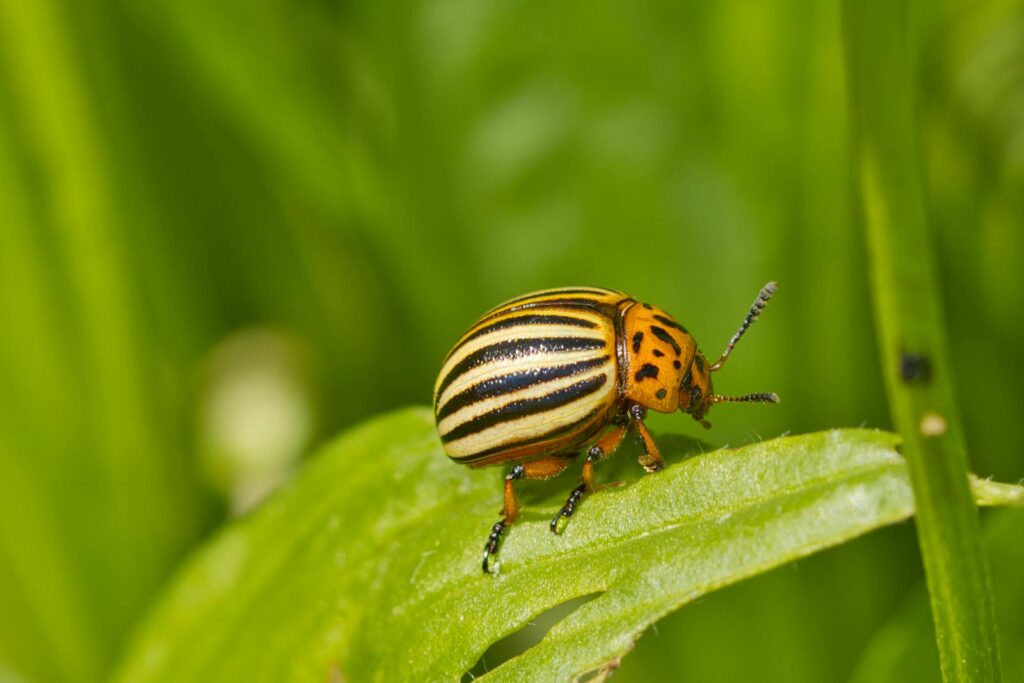Picture this: a tiny, striped insect no bigger than your fingernail has farmers across the globe breaking into cold sweats. This isn’t science fiction – it’s the reality of dealing with one of agriculture’s most cunning adversaries. The Colorado potato beetle has turned crop protection into an arms race, and frankly, it’s winning. What makes this little creature so terrifying isn’t just its appetite for destruction, but its almost supernatural ability to laugh in the face of every chemical weapon we’ve thrown at it.
Meet the Master of Disguise
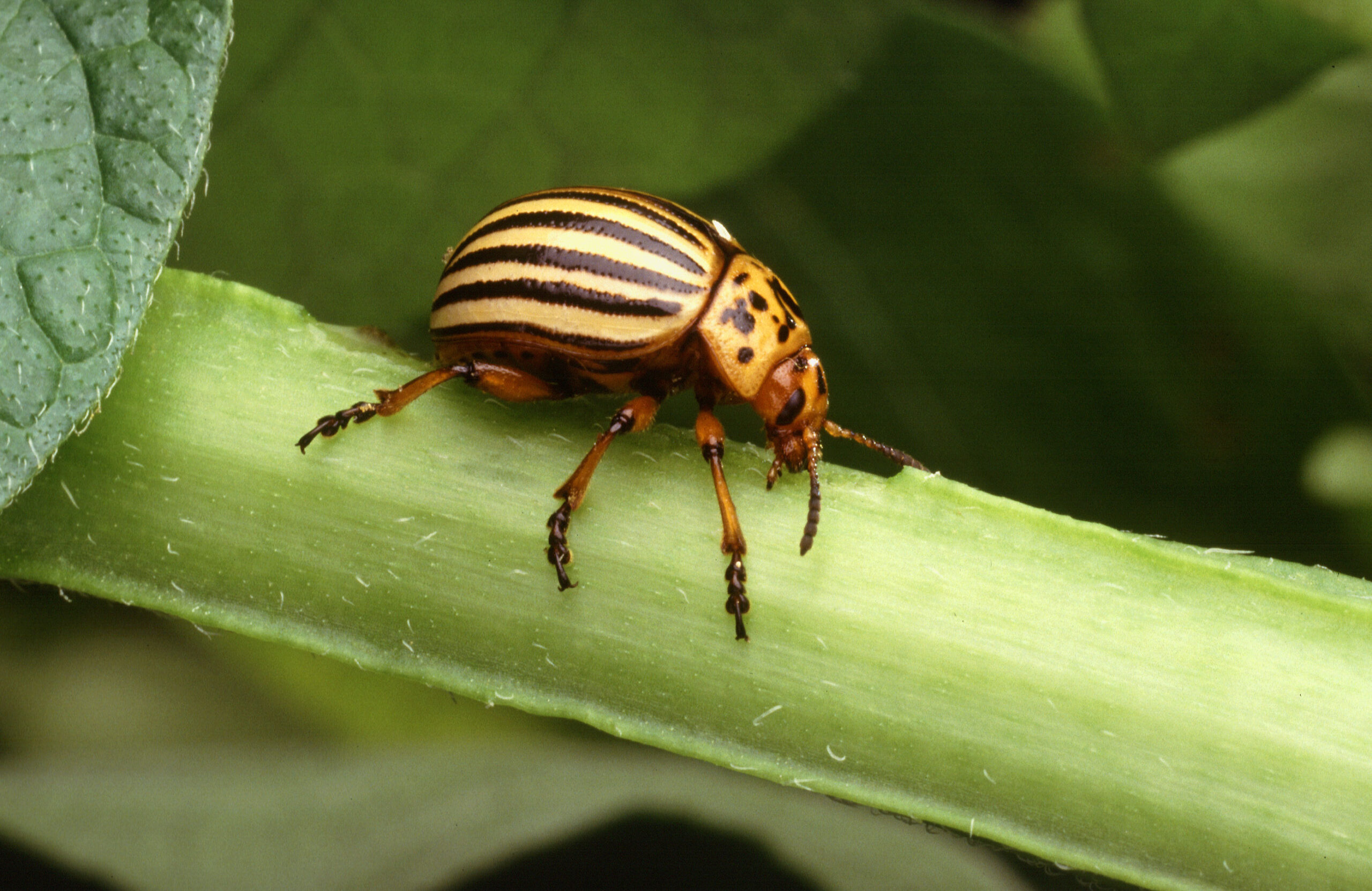
The Colorado potato beetle sports a deceptively beautiful appearance that masks its destructive nature. Its hard shell gleams with alternating black and yellow stripes, making it look almost like a tiny racing car speeding through potato fields. Adult beetles measure about half an inch long, but don’t let their small size fool you. These insects pack more agricultural devastation per square inch than almost any other pest on the planet. Both adults and larvae feast voraciously on potato plants, but it’s the bright orange, hump-backed larvae that really do the heavy lifting when it comes to crop destruction.
From Western Wanderer to Global Menace
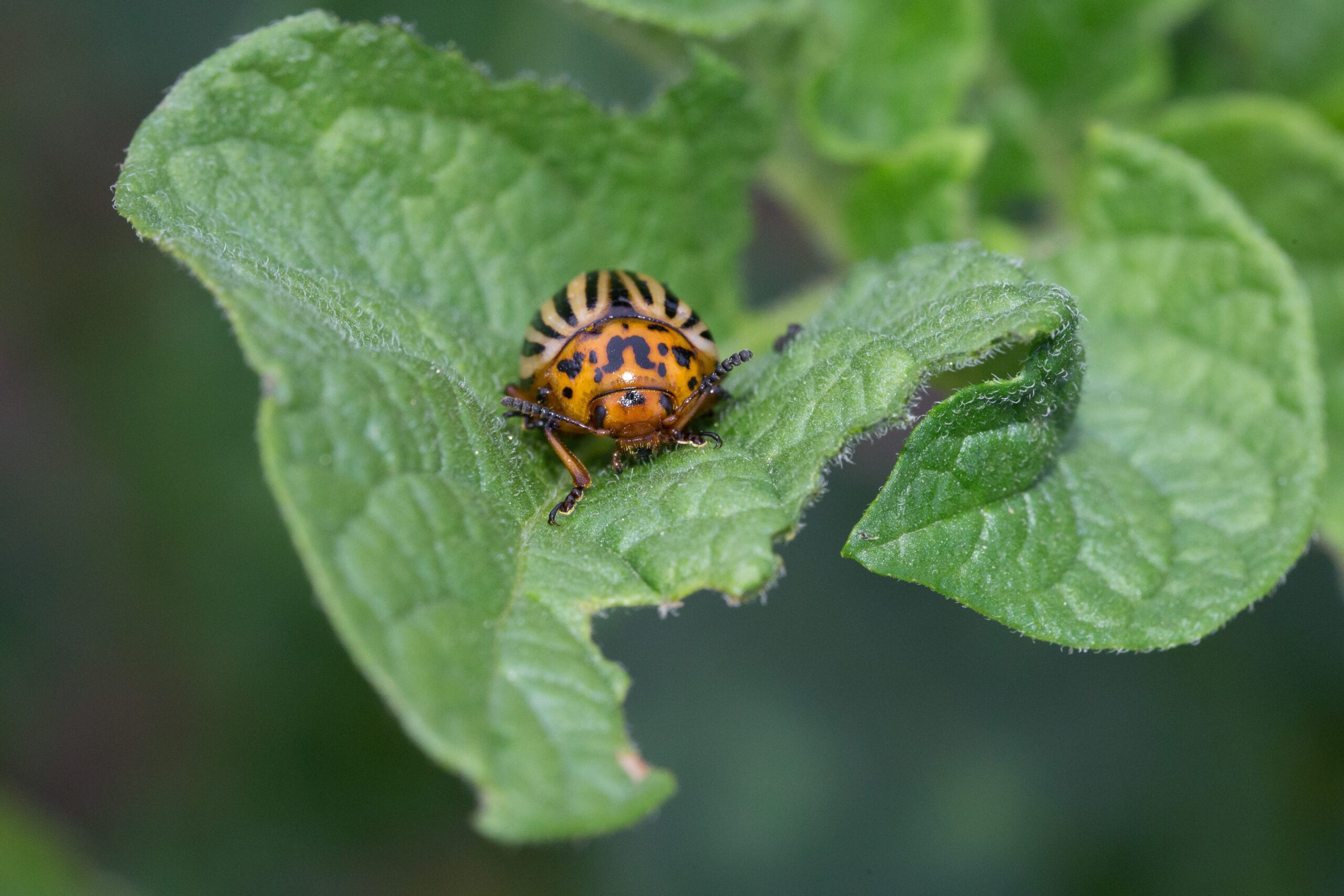
Originally, this beetle lived a quiet life in the Colorado Rockies, munching peacefully on wild nightshade plants. Everything changed in the 1860s when European settlers began cultivating potatoes nearby. The beetle discovered that domestic potatoes were like an all-you-can-eat buffet compared to their wild cousins. Within decades, they had spread eastward across North America like wildfire, hitching rides on trains and farm equipment. By the early 1900s, they had crossed the Atlantic and established themselves as Europe’s agricultural nightmare. Today, you’ll find these persistent pests on every continent except Antarctica and Australia – though Australia is constantly on guard to keep it that way.
The Incredible Eating Machine
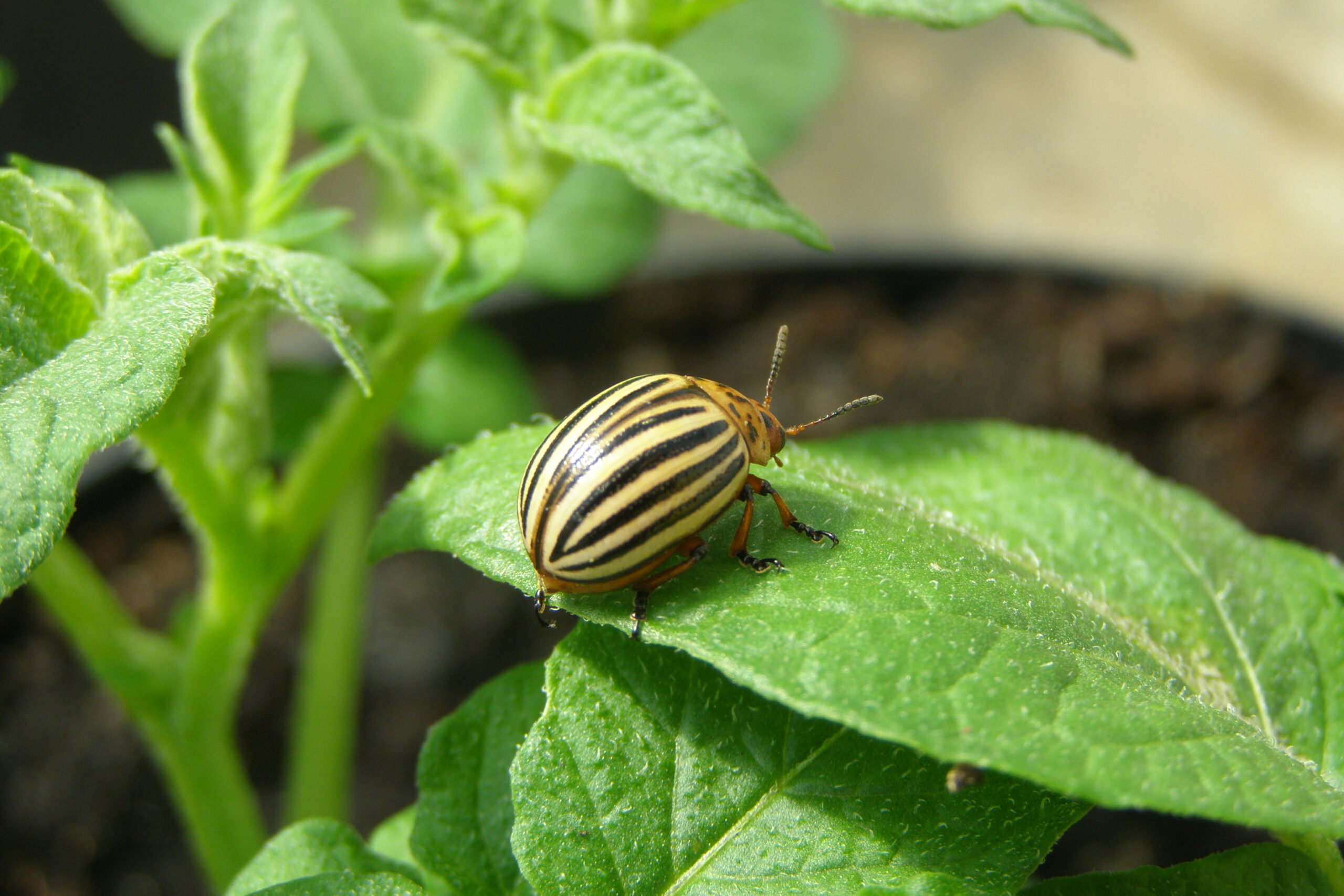
When Colorado potato beetles set up shop in a field, they don’t just nibble – they obliterate. A single female can lay up to 500 eggs during her lifetime, and those eggs hatch into larvae with appetites that would make a teenager jealous. These orange grubs can completely strip a potato plant of its leaves in just a few days. The feeding damage doesn’t just look ugly; it cuts off the plant’s ability to photosynthesize and produce the tubers we harvest. In severe infestations, farmers can lose their entire crop in a matter of weeks, watching millions of dollars literally get eaten away.
Master of Chemical Warfare

Here’s where things get really scary: Colorado potato beetles have developed resistance to more pesticides than almost any other insect. We’re talking about over 50 different active ingredients that once killed them but now barely slow them down. They’ve outsmarted organochlorines, organophosphates, carbamates, and even some of the newest synthetic chemicals. It’s like they have a team of tiny biochemists working around the clock to neutralize whatever we throw at them. This resistance develops so quickly that a pesticide might work perfectly one season and be completely useless the next.
The Science Behind Their Superpowers
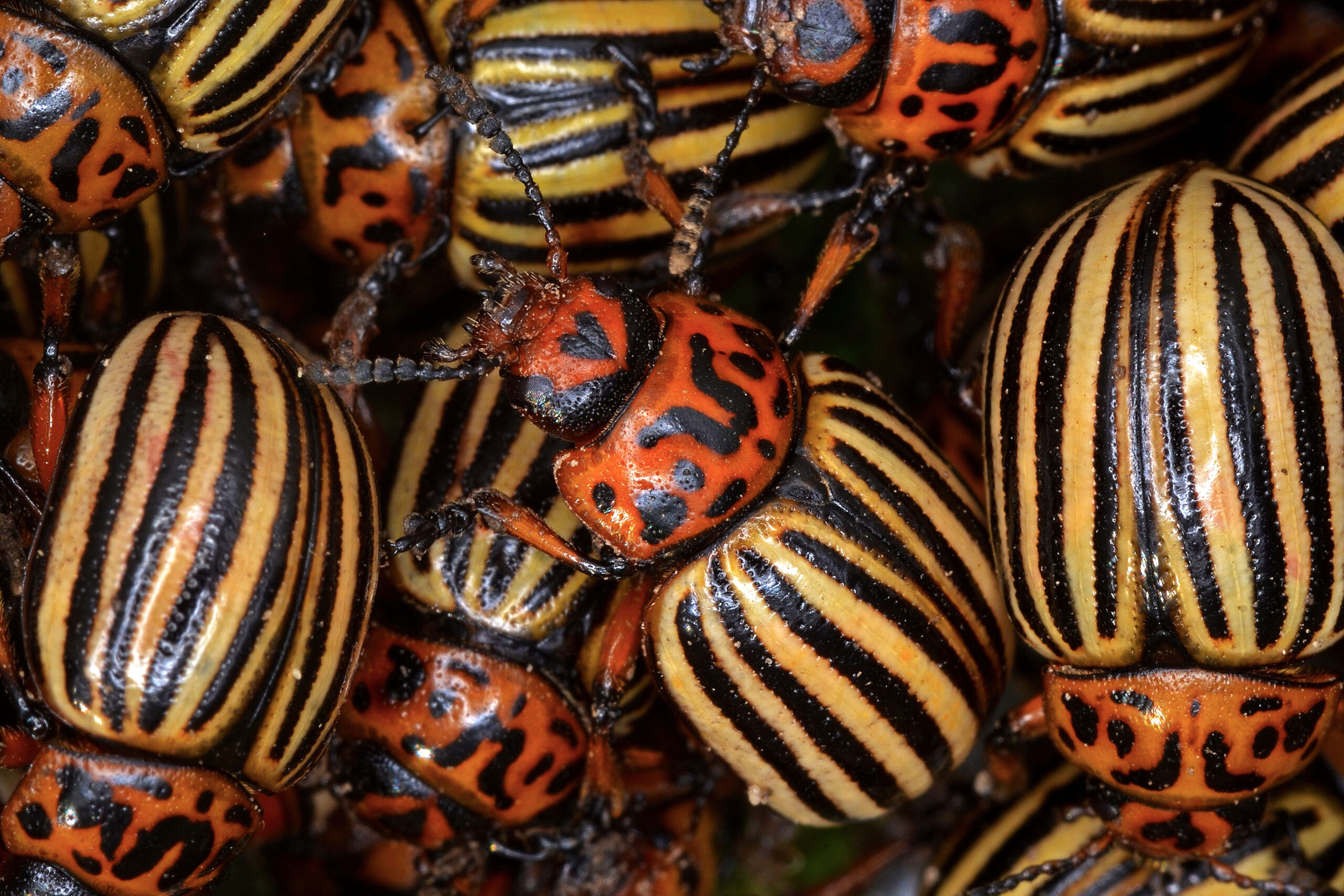
The beetle’s resistance isn’t magic – it’s evolution in hyperdrive. Their short generation time means they can produce multiple generations per year, each one potentially carrying genetic mutations that help them survive pesticide exposure. Some beetles develop enhanced detoxification enzymes that break down chemicals before they can cause harm. Others have altered nerve receptors that pesticides can’t bind to effectively. Perhaps most impressively, some populations have developed behavioral resistance, learning to avoid treated areas entirely. It’s like watching natural selection happen in fast-forward, and farmers are getting a front-row seat to one of nature’s most impressive adaptation stories.
Economic Devastation Across Continents
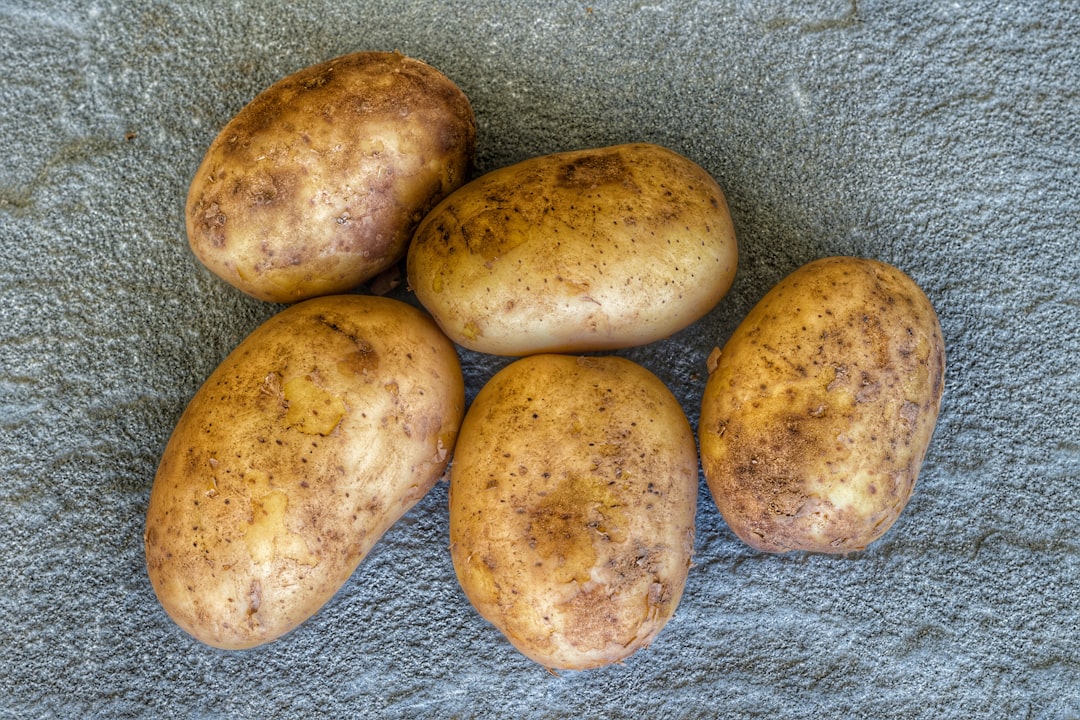
The financial impact of Colorado potato beetles reads like a horror story for agricultural economists. In North America alone, these pests cause hundreds of millions of dollars in crop losses and control costs annually. European farmers spend enormous amounts on specialized pesticides and monitoring systems, often applying chemicals multiple times per season. The ripple effects extend far beyond individual farms – potato processing companies, french fry manufacturers, and even restaurants feel the pinch when supplies dwindle and prices soar. Some regions have seen potato farming become economically unviable due to the constant beetle pressure and skyrocketing control costs.
The Lifecycle of Destruction
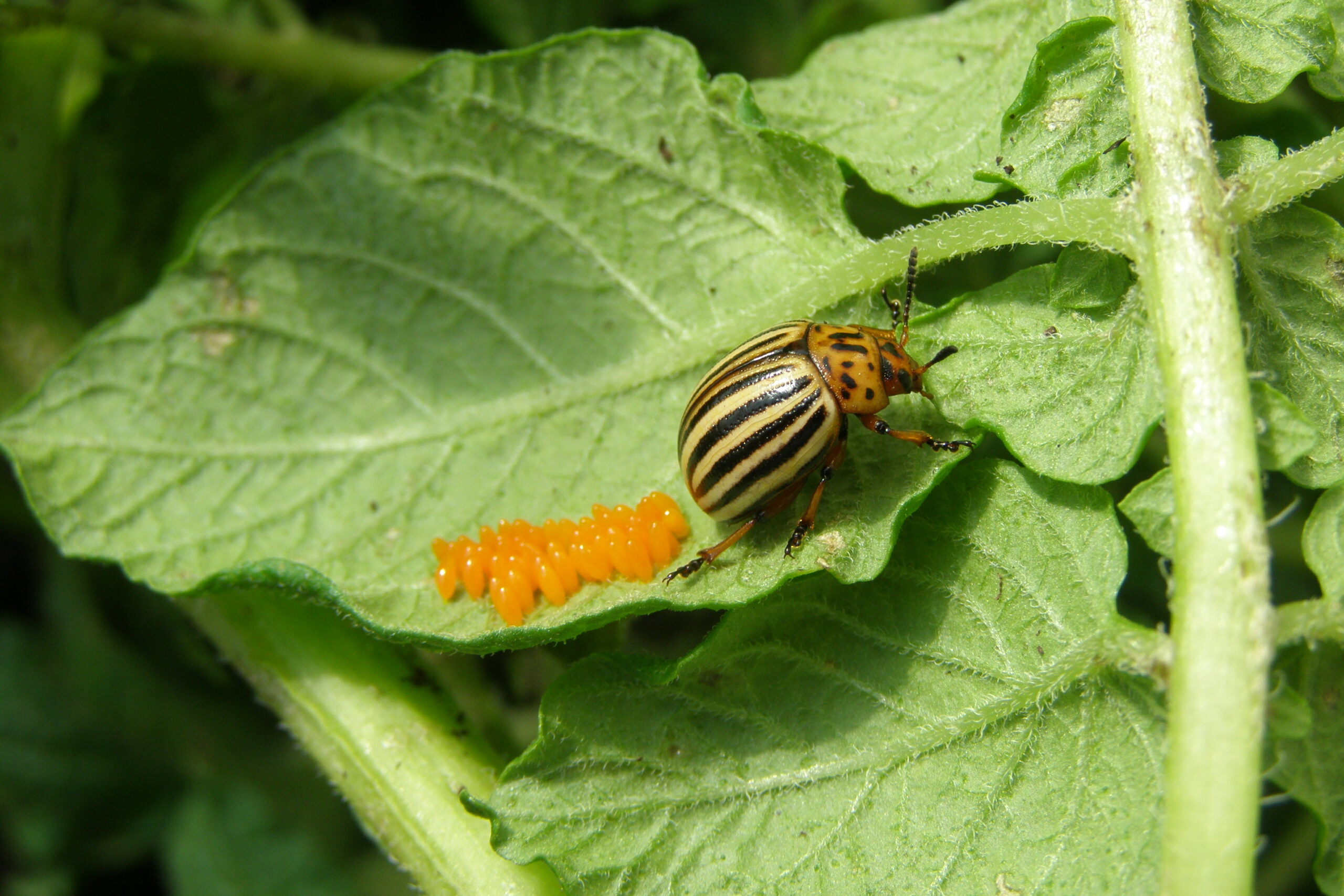
Understanding how Colorado potato beetles reproduce helps explain why they’re so difficult to control. Adults emerge from soil in late spring, having survived winter in a state called diapause – essentially insect hibernation. They immediately begin feeding and mating, with females laying bright yellow egg clusters on the undersides of leaves. These eggs hatch into four distinct larval stages, each hungrier than the last. After about three weeks of intensive feeding, larvae burrow into the soil to pupate, emerging as adults ready to start the cycle all over again. In warmer climates, they can complete two or even three generations per year, multiplying their impact exponentially.
Biological Warfare: Nature Fights Back
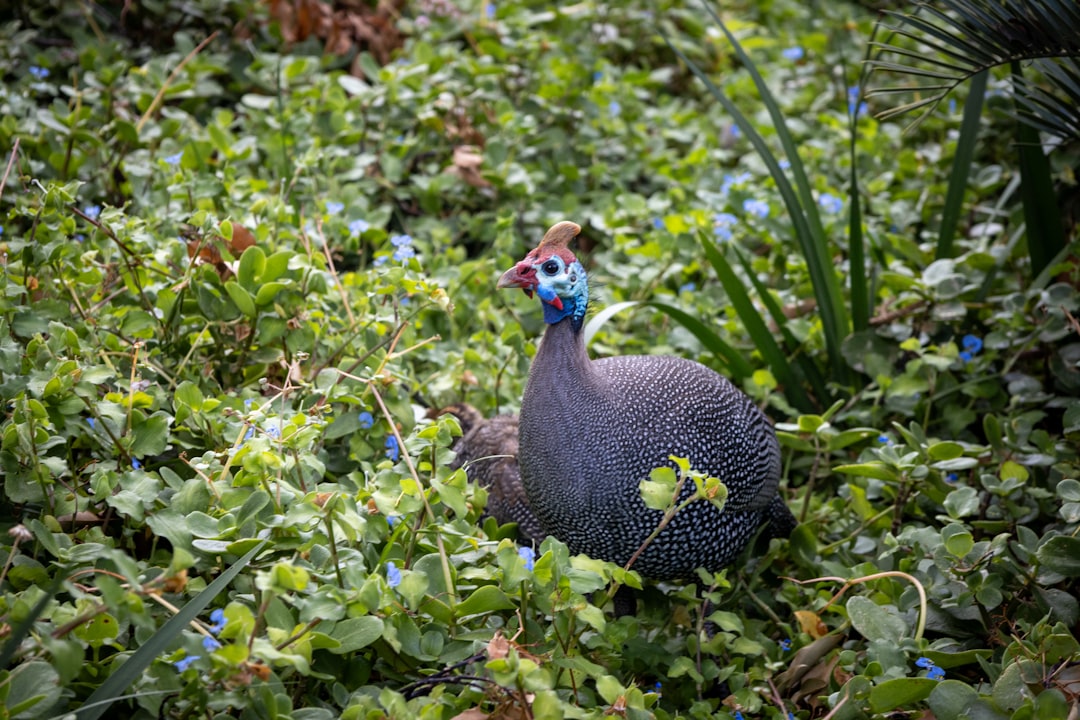
Scientists have discovered that nature provides some weapons in the fight against Colorado potato beetles. Certain birds, like guinea fowl and some species of ground beetles, actively hunt both adults and larvae. Beneficial insects such as lady beetles and lacewings prey on beetle eggs, while predatory mites attack young larvae. Perhaps most promising are naturally occurring fungi and bacteria that can infect and kill beetles without harming other organisms. Researchers are also exploring parasitic wasps that lay their eggs inside beetle larvae, turning the pests into unwilling nurseries for their own destruction.
The Great Pesticide Arms Race
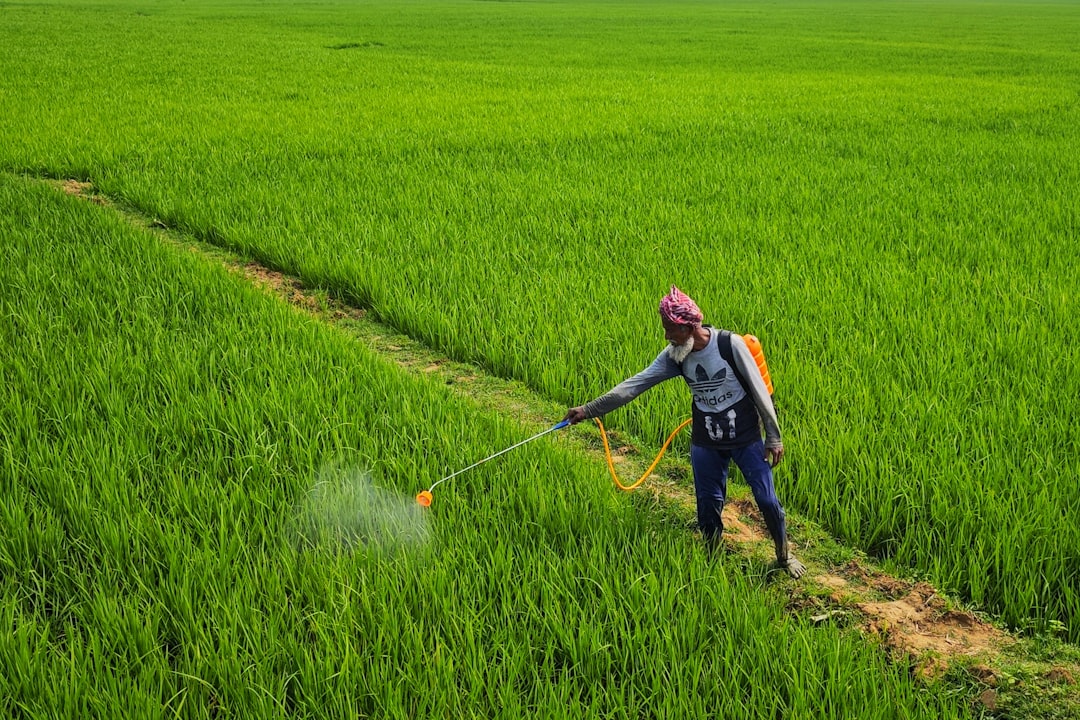
The battle between beetles and pesticides resembles a never-ending arms race where both sides keep escalating their weapons. When DDT was introduced, it initially devastated beetle populations – until resistant individuals survived and reproduced. The same pattern repeated with each new chemical class: initial success followed by inevitable resistance. Modern pest management now requires rotating between different pesticide modes of action, using computer models to predict resistance development, and implementing strict resistance management protocols. Some farmers have resorted to mixing multiple chemicals, hoping to overwhelm the beetles’ defenses, but this approach often accelerates resistance development rather than preventing it.
Innovative Solutions on the Horizon
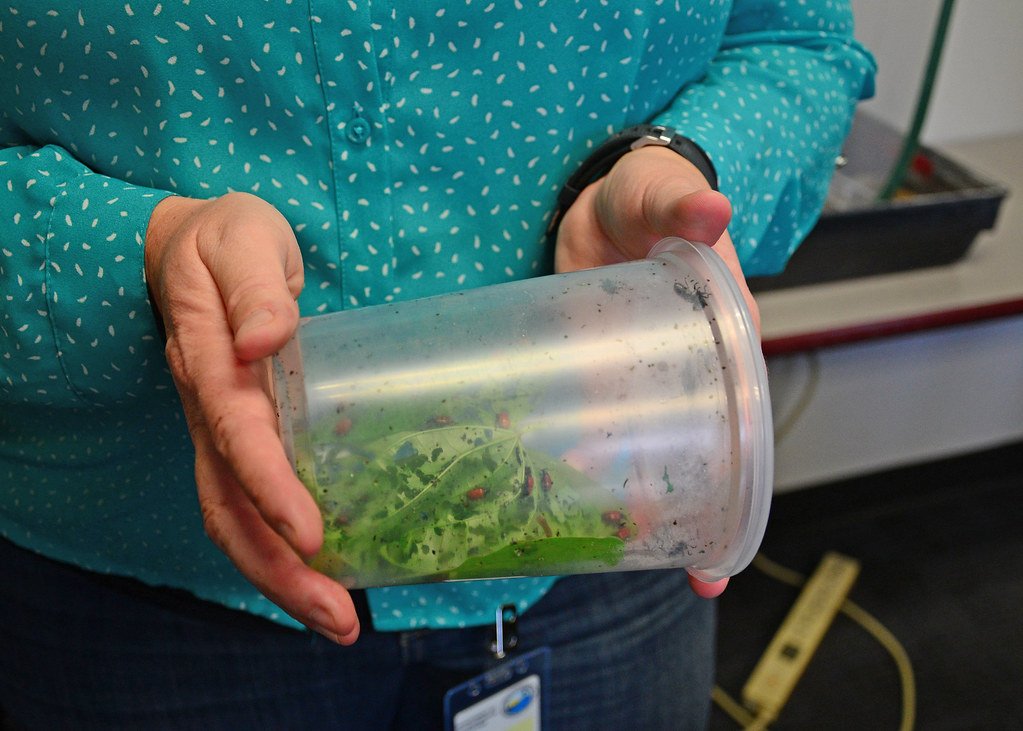
The future of Colorado potato beetle control lies in outsmarting rather than overpowering these adaptable insects. Scientists are developing genetically modified potato varieties that produce their own insecticidal proteins, though beetles have already begun developing resistance to some of these traits. RNA interference technology shows promise by disrupting essential beetle genes, potentially offering a more sustainable control method. Precision agriculture techniques use drones and satellite imagery to detect infestations early and apply treatments only where needed. Some researchers are even exploring the use of beetle pheromones to disrupt mating or lure insects into traps.
Cultural Control: Working with Nature
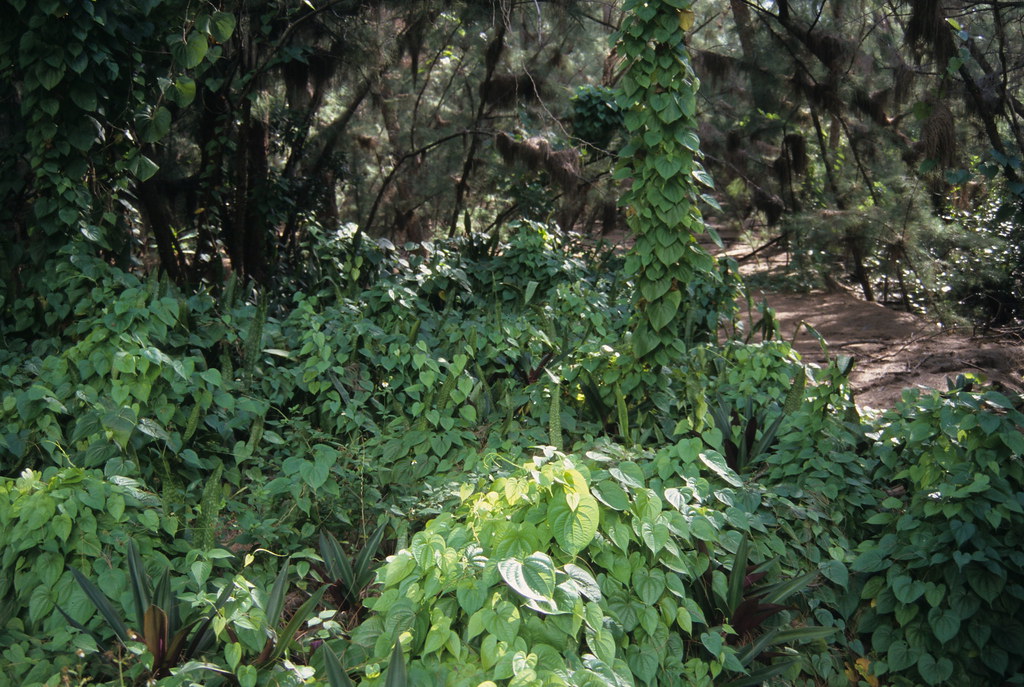
Smart farmers have learned that cultural practices can be just as important as chemicals in managing Colorado potato beetles. Crop rotation disrupts the beetle lifecycle by removing their preferred food source for a season, though they can fly considerable distances to find new potato fields. Cover crops and diverse plantings provide habitat for beneficial insects that prey on beetles. Some growers use trap crops – small plots of highly attractive potato varieties that concentrate beetles in specific areas for targeted treatment. Timing also matters: planting dates can be adjusted to avoid peak beetle emergence, while early harvest can escape late-season population explosions.
Global Surveillance and Early Warning
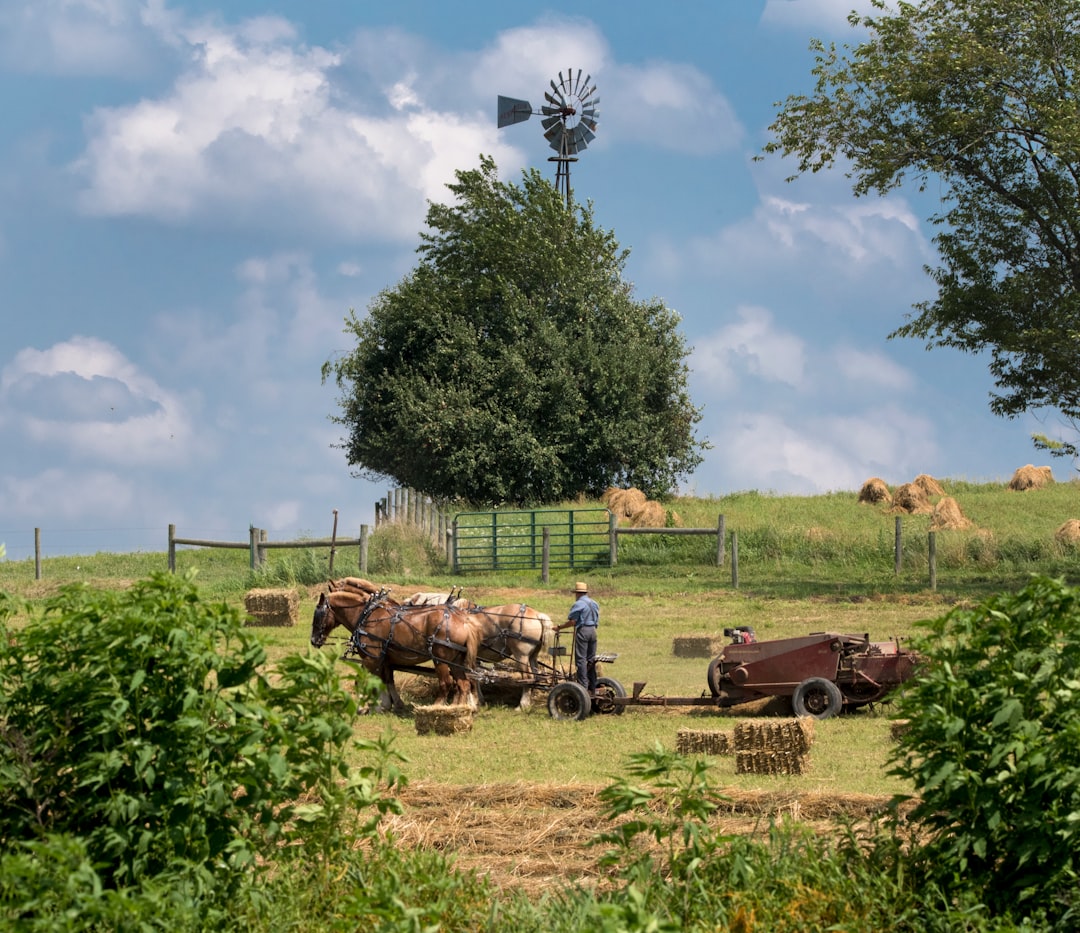
Countries without established Colorado potato beetle populations maintain sophisticated monitoring systems to prevent invasion. Australia operates one of the world’s most comprehensive agricultural surveillance programs, with inspectors checking imported goods and monitoring potential entry points. Early detection is crucial because eradication becomes nearly impossible once beetles establish breeding populations. International cooperation helps track beetle spread and resistance patterns, allowing countries to prepare for potential invasions. These monitoring efforts have successfully prevented establishment in several regions, proving that vigilance can triumph over even the most persistent invaders.
The Human Factor in Beetle Spread

Humans have been unwitting accomplices in the Colorado potato beetle’s global conquest. International trade in agricultural products provides countless opportunities for beetles to hitchhike to new territories. Farm equipment, seed potatoes, and even contaminated soil can harbor eggs or larvae that survive long-distance transport. Military movements during both world wars accelerated beetle spread across Europe as equipment and supplies moved between regions. Today, increased global travel and commerce mean that new beetle populations can establish themselves thousands of miles from their origin points in a matter of weeks rather than decades.
Learning from Failure: What Doesn’t Work
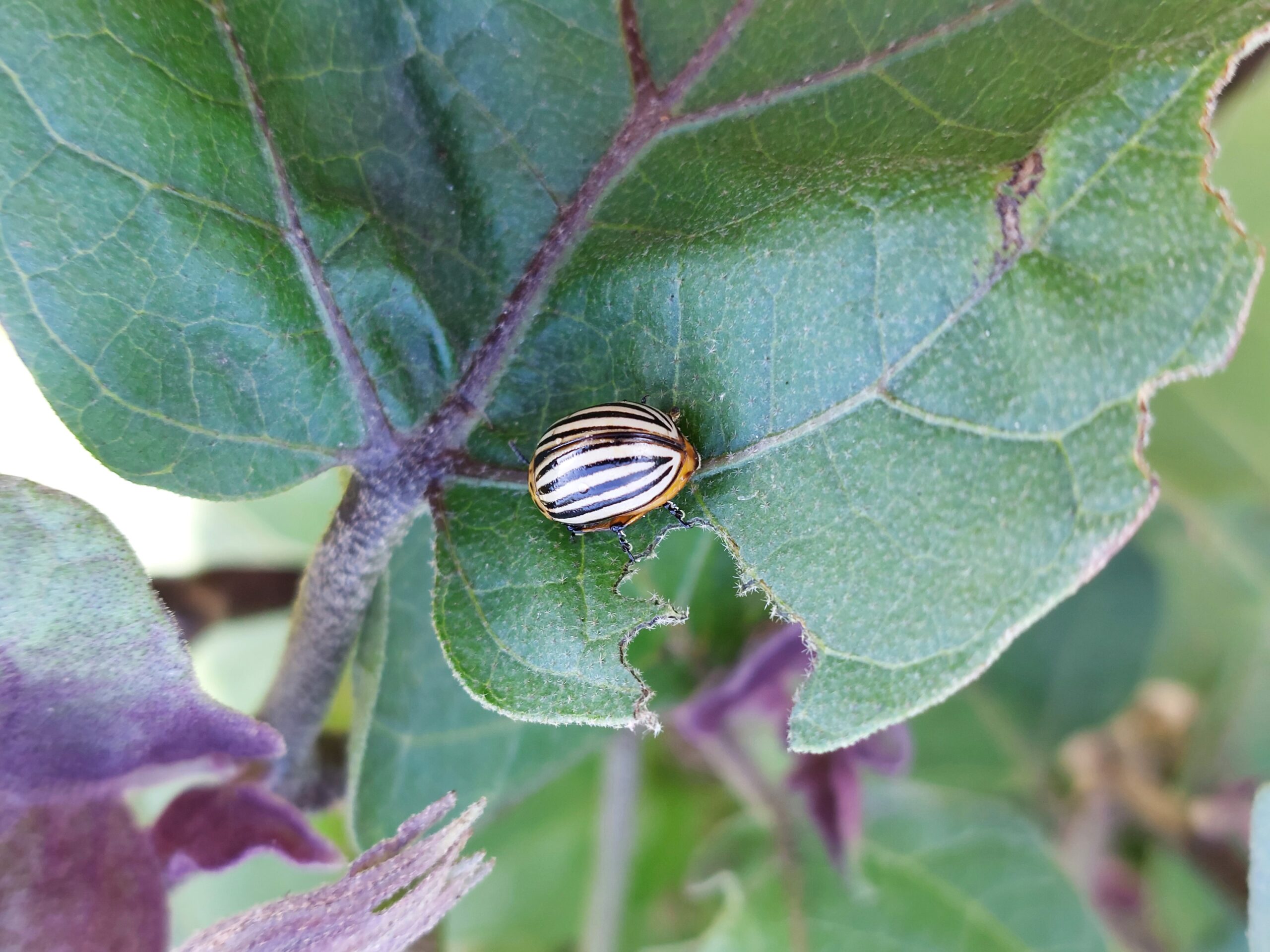
The history of Colorado potato beetle control is littered with promising solutions that ultimately failed. Chemical-only approaches consistently collapse as resistance develops, often leaving farmers worse off than before treatment began. Prophylactic spraying – applying pesticides preventively rather than in response to infestations – has accelerated resistance development in many regions. Single-tactic approaches, whether biological or chemical, rarely provide long-term success against such an adaptable pest. Perhaps most importantly, ignoring the problem hoping it will go away has never worked – beetle populations grow exponentially when left unchecked, making eventual control exponentially more difficult and expensive.
Conclusion: The Future of Potato Protection
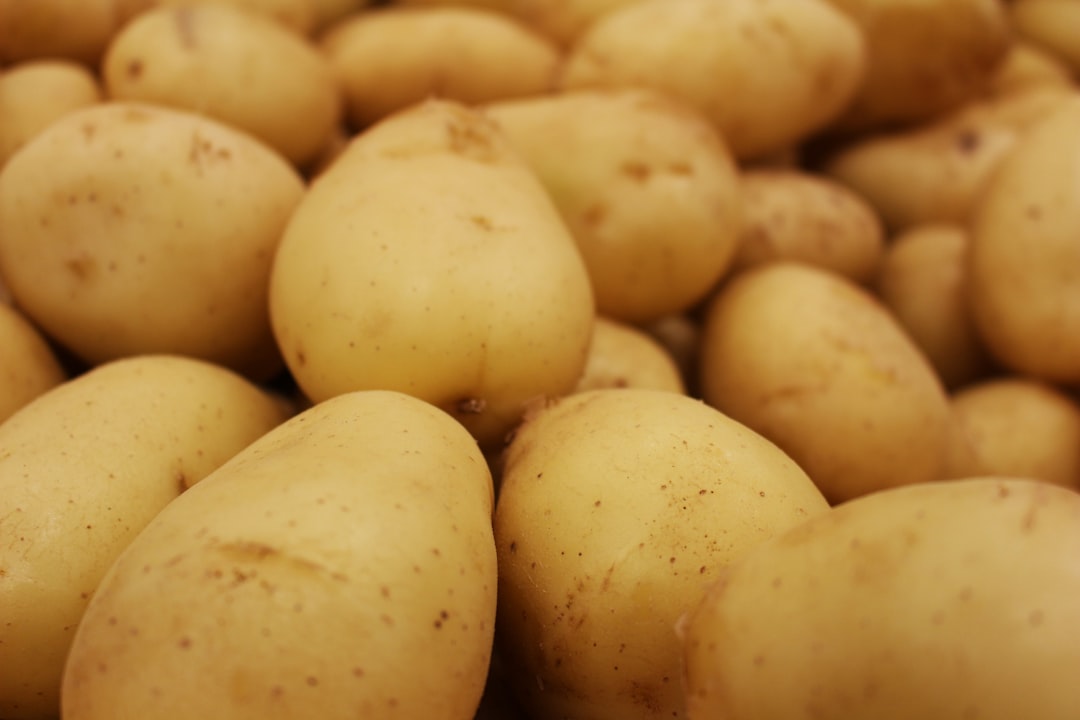
Looking ahead, successful Colorado potato beetle management will require embracing complexity rather than seeking simple solutions. Integrated pest management approaches that combine multiple tactics – biological, cultural, and chemical – show the most promise for sustainable control. Artificial intelligence and machine learning are beginning to help farmers predict beetle behavior and optimize treatment timing. Gene drives and other advanced biotechnology tools may eventually provide new weapons in the ongoing battle. However, the beetle’s remarkable adaptability suggests that any solution will need to be dynamic and responsive rather than static. The war against Colorado potato beetles isn’t one that can be won definitively – it’s a challenge that will require constant vigilance, innovation, and adaptation from the agricultural community.

